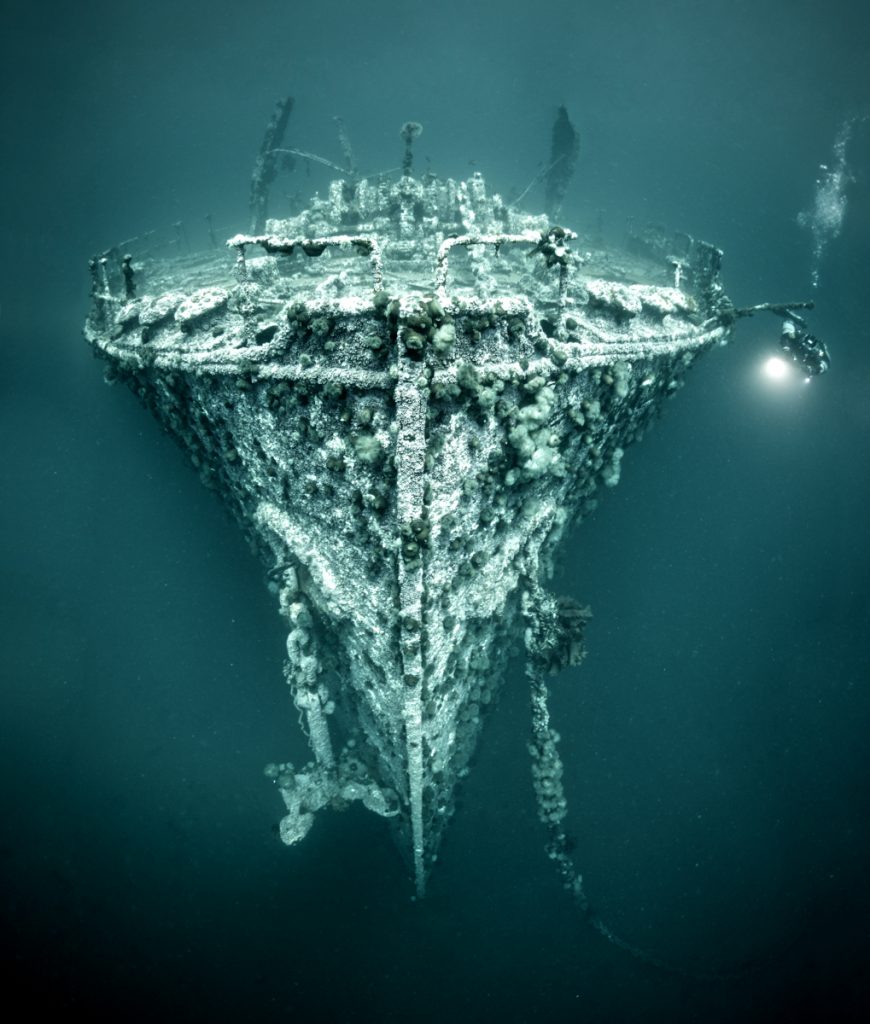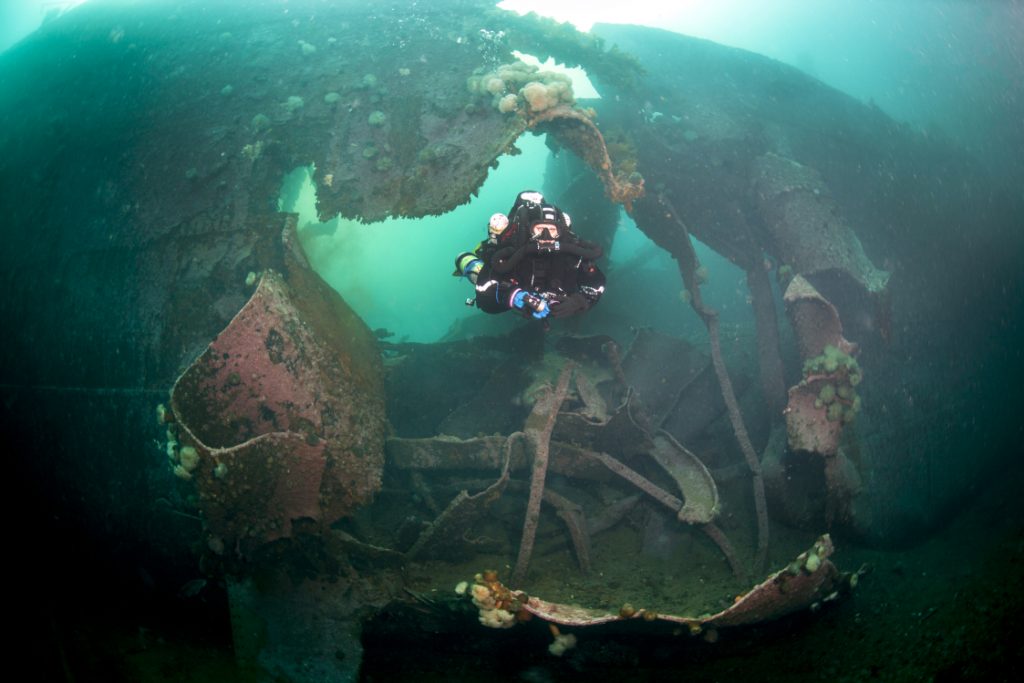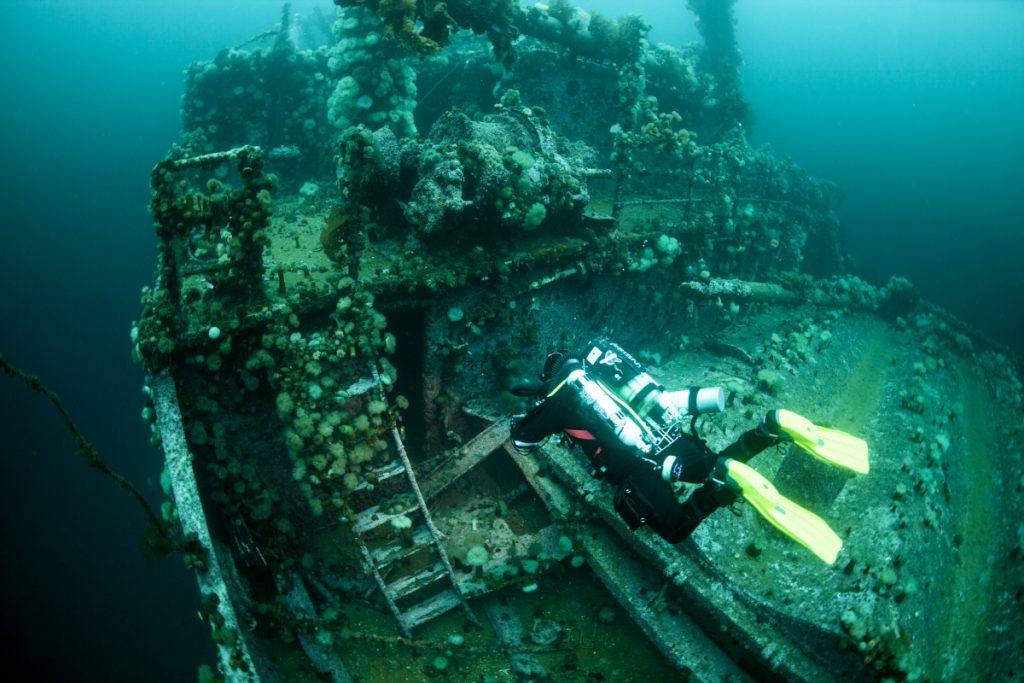Exploring the Bell Island Shipwrecks Today
The Bell Island shipwrecks are today visited by scuba divers from around the world. Why do they come here to explore these wrecks? Listen to Jill Heinerth (a world-famous Canadian underwater filmmaker) describe her fascination with diving the Bell Island shipwrecks.
Watch video Exploring Bell Island with transcript
The shipwrecks are now overgrown with marine life and are incredibly beautiful to experience. Yet the tremendous damage to the ships caused by the German torpedoes is obvious and overwhelming. Swimming through the cargo holds and seeing the vast quantities of iron ore in the ships reminds a diver of the vital task the ships and their crews were carrying out during World War II. Swimming through the cabins and seeing sinks, toilets, bathtubs and the occasional shoe forces us to remember the crewmen who lived on the ships, and of the 65 men who died when they were torpedoed and sunk in 1942.
The experience of diving on the Bell Island shipwrecks is a combination of being immersed in wartime history, overwhelmed by the sheer size of shipwrecks (more than 125 metres long), awed by the beauty of the marine life, challenged by diving deep into the cold, clear waters of Newfoundland, and warmed by the stories of local Newfoundlanders. Each ship has a different story to tell and contains wonders to discover.
Luckily, many artifacts have been recovered from the shipwrecks, so non-divers can learn about these tragic events in local museums.




